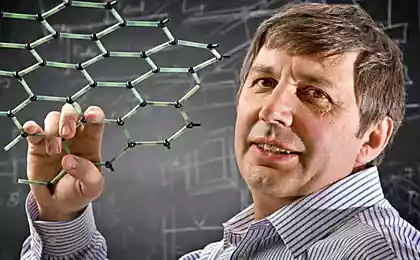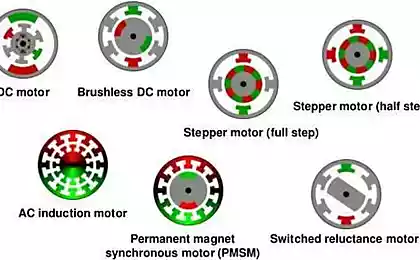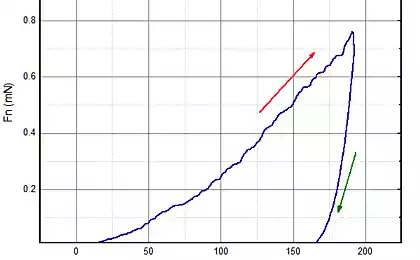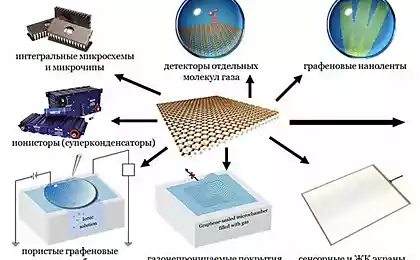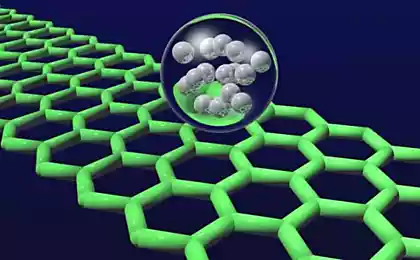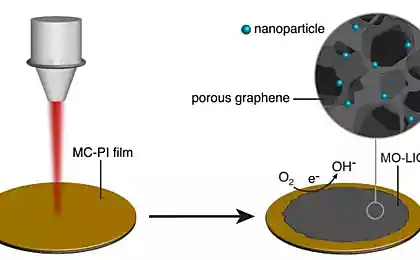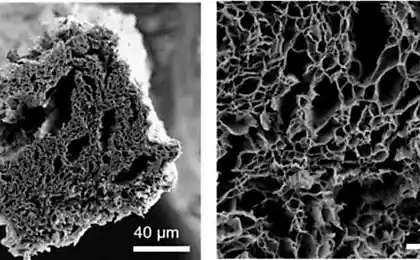1762
Graphene nano-engine
This week has been fruitful on news related to the applications of graphene and other nanomaterials. First was ultrathin transistor , now in the same journal Nano Letters published statyu the development of nano-molecular motor in which the graphene layer plays a key role. This engine consists of a highly elastic membrane, which plays the role of the piston, and the molecules ClF 3 sub>, is a working body. The volume of the working fluid is changed under the influence of the laser. Nano engine develops pressure to 10 6 sup> Pa and maintains more than 10 000 cycles.
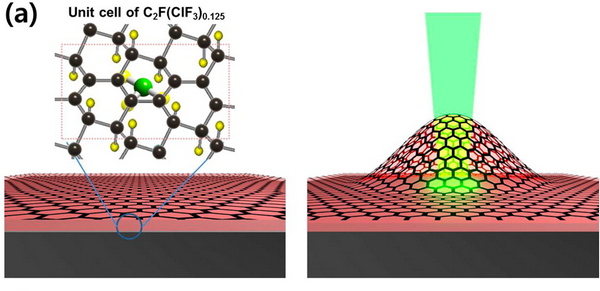
The engine consists of particles of graphene with inclusions ClF 3 sub>. Between the carbon atoms and molecules ClF 3 sub> chemical bonds arise CF, which can easily be dissociated. In particular, these bonds are broken by irradiation with a laser with a wavelength of 532 nm. Destruction bonds leads to the fact that the molecules trying to "move away" from carbon atoms. As a result, the pressure increases under the layer of graphene, graphene is separated from the substrate, and is formed of a blister (bubble). When you disable the laser, graphene quickly returns to its original flat state owl as reactivity ClF 3 sub> is very high, and again he forms bonds with the carbon atoms. The rapid increase in the volume under a layer of graphene is equivalent to the expansion of the working fluid and the movement of the piston in an internal combustion engine. The key parameters determining the power of the engine is the pressure that it can withstand, which in turn depends on the modulus of elasticity of the material of the membrane, the gas permeability of the membrane and its adhesion to the substrate.

In graphene treated liquid ClF 3 sub> form ionic bonds between the fluorine and carbon, thereby forming a positive charge constituting 6.1 holes per fluorine atom. Such ionic bonds can be easily broken, since they have a very small energy of ~ 54 kJ / mol. This is about ten times less energy Sanchez covalent bond CF. When a quasi-stable molecule ClF 3 sub> loses its ionic bond, this leads to a transition ClF 3 sub> in the gas phase and a rapid increase in pressure. According to the researchers, the internal pressure of ~ 23 MPa. This pressure is sufficient for the local offices of the graphene substrate. Thanks to the high strength of graphene, Young's modulus can reach 1 TPa, and low permeability, the whole gas remains inside the bubble. Structural analysis of graphene showed that even after 10,000 cycles, no structural damage occurs. The authors believe that the characteristics of the engine can be significantly improved by optimizing the parameters of the laser pulse, the beam diameter, as well as the selection of the most effective "working body».

Unfortunately, access to the full text of the article chargeable, but on the website of the journal is freely available additional materials .
______________________
Text prepared in blog editor from © SoftCoder.ru h6>

The engine consists of particles of graphene with inclusions ClF 3 sub>. Between the carbon atoms and molecules ClF 3 sub> chemical bonds arise CF, which can easily be dissociated. In particular, these bonds are broken by irradiation with a laser with a wavelength of 532 nm. Destruction bonds leads to the fact that the molecules trying to "move away" from carbon atoms. As a result, the pressure increases under the layer of graphene, graphene is separated from the substrate, and is formed of a blister (bubble). When you disable the laser, graphene quickly returns to its original flat state owl as reactivity ClF 3 sub> is very high, and again he forms bonds with the carbon atoms. The rapid increase in the volume under a layer of graphene is equivalent to the expansion of the working fluid and the movement of the piston in an internal combustion engine. The key parameters determining the power of the engine is the pressure that it can withstand, which in turn depends on the modulus of elasticity of the material of the membrane, the gas permeability of the membrane and its adhesion to the substrate.

In graphene treated liquid ClF 3 sub> form ionic bonds between the fluorine and carbon, thereby forming a positive charge constituting 6.1 holes per fluorine atom. Such ionic bonds can be easily broken, since they have a very small energy of ~ 54 kJ / mol. This is about ten times less energy Sanchez covalent bond CF. When a quasi-stable molecule ClF 3 sub> loses its ionic bond, this leads to a transition ClF 3 sub> in the gas phase and a rapid increase in pressure. According to the researchers, the internal pressure of ~ 23 MPa. This pressure is sufficient for the local offices of the graphene substrate. Thanks to the high strength of graphene, Young's modulus can reach 1 TPa, and low permeability, the whole gas remains inside the bubble. Structural analysis of graphene showed that even after 10,000 cycles, no structural damage occurs. The authors believe that the characteristics of the engine can be significantly improved by optimizing the parameters of the laser pulse, the beam diameter, as well as the selection of the most effective "working body».

Unfortunately, access to the full text of the article chargeable, but on the website of the journal is freely available additional materials .
______________________




